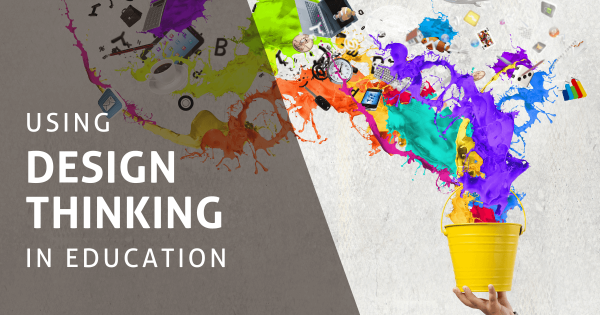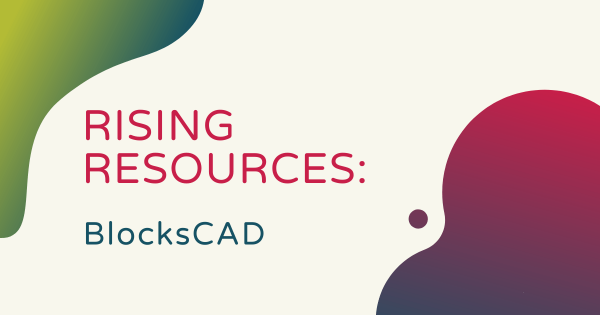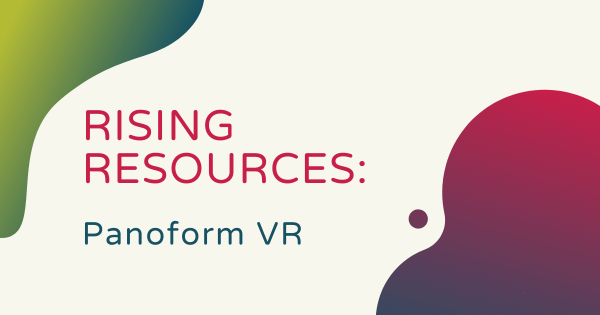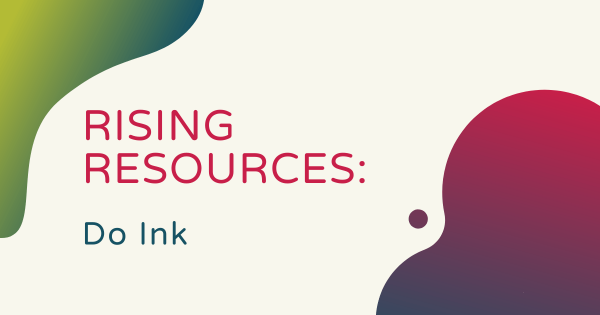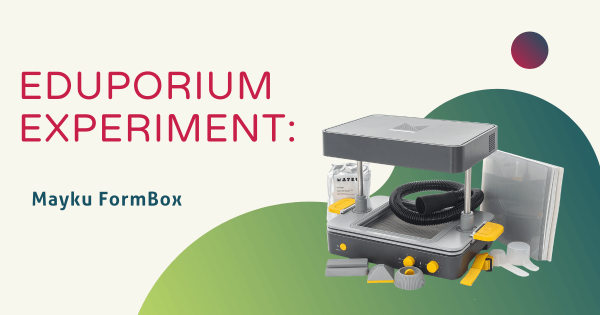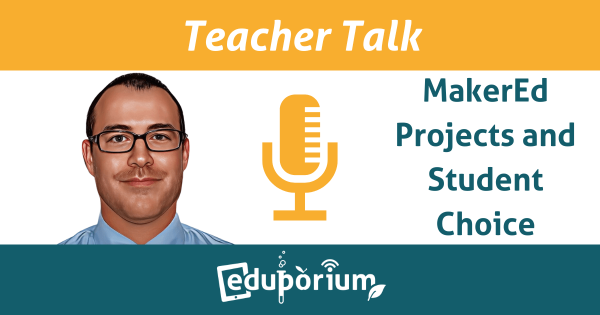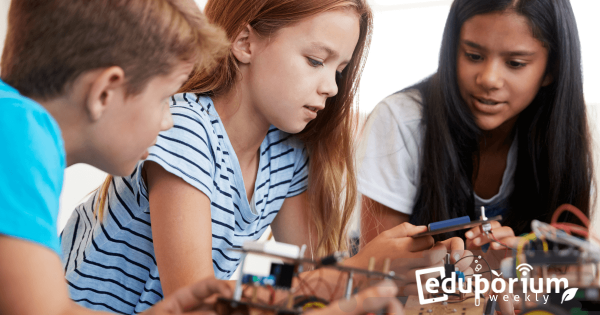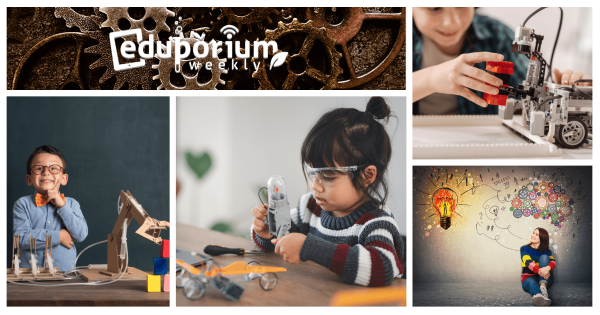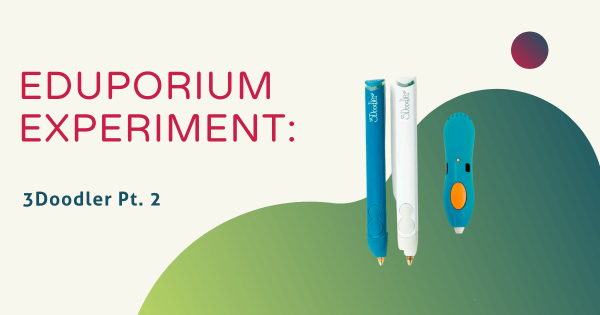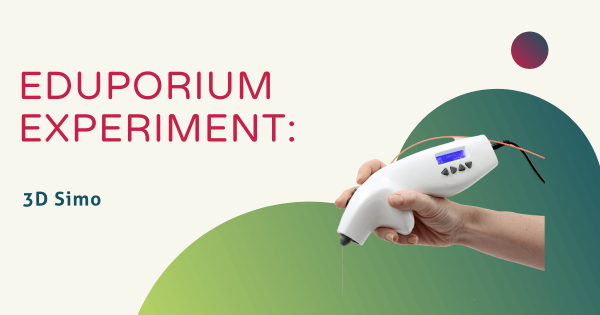To create environments and experiences that are conducive to helping kids build design thinking skills, there are a few key areas that educators should focus on. Since a K–12 makerspace, for example, is a notably open-ended environment, combining play-based exploration with design thinking could be effective, especially when compared to traditional instruction.
Design Thinking
Design thinking is an innovative problem-solving approach that empowers kids to address complex challenges through a human-centric lens. It involves a creative and iterative process that integrates empathy, ideation, prototyping, and testing. Children benefit immensely from learning design thinking and it equips them with valuable skills in various disciplines and real-world scenarios. First, design thinking helps to foster a critical eye and problem solving success. Encouraging kids to empathize with an end-user, identify problems, and brainstorm solutions helps them shape more creative and collaborative mindsets. This approach can help cultivate adaptability and resilience and nurture a deeper understanding of user needs and their experiences. Students learn to view challenges from multiple perspectives, enhancing their ability to develop solutions that genuinely address many diverse needs.
As kids apply design thinking principles, they also enhance their collaboration and communication skills. The iterative nature of the process encourages teamwork, effective communication, and the ability to incorporate diverse viewpoints. These skills are not only beneficial in academic settings but valued in professional environments, where interdisciplinary collaboration is constant. In the future, students who've mastered design thinking will be well-off for navigating complex problems, innovate in their chosen field, and contribute to society. Whether pursuing a career in technology, business, healthcare, or social impact, their adaptability and problem-solving mindsets cultivated through design thinking will empower children to thrive in a world characterized by its change and evolution. A focus on empathy and user-centered design is very useful in fields like product development, entrepreneurship, and more.
-
Rising Resources | BlocksCAD For 3D Modeling
BlocksCAD is a tool that allows students to use blocks of code to engineer completely digital designs while they work on building their tech, invention, and other crucial STEM literacies. Educators can use BlocksCAD to shape an entire class or unit or to supplement existing instruction and sign up for the plan that’s best for what both them and their -
Rising Resources | Panoform For VR Creation
Designed to do more than simply immerse them in vivid content, Panoform VR empowers children to become creators and even own how they design and view new-age media. Though it may seem complex and technical, it is actually very accessible—even for beginners who want to explore creating in VR and any students who enjoy learning with this unique medium. -
Rising Resources | Using Do Ink For Classroom Green Screens
After it launched, it did not take long for the Do Ink app to generate interest among creative teenagers, who loved using it for creating all sorts of digital artwork. From there, it permeated the education space when many of them introduced it to their teachers. The rest is history as these Do Ink animation and drawing apps quickly grew -
Eduporium Experiment | Mayku FormBox
Classified as a desktop 3D vacuum former, the Mayku FormBox serves as an easy-to-use and affordable machine that helps enable your students to create 3D objects safely and quickly. The FormBox comes with the getting started manual, a casting guide, and a forming guide and the Mayku Teach portal contains helpful project ideas for students and insights for teachers. -
Teacher Talk | MakerEd Projects & Student Choice
The versatility of maker education means students get more opportunities to choose how they learn best. For neurodivergent kids, underrepresented students, and others, MakerEd projects can improve engagement, agency, and retention. Makerspace director, Nicholas Provenzano, known as “The Nerdy Teacher,” shares benefits of those projects in this Teacher Talk post. -
Eduporium Weekly | Getting Back into PBL
PBL units can be incorporated into just about any subject. Students can take part in projects, design simulations, and work together to better their school community or actual community. As plans for the 2021-22 school year are developed this summer, PBL could be a top strategy for ensuring access to game-changing learning opportunities. -
Eduporium Weekly | Inventing as a Part of Education
When students are given the freedom to invent unheard of solutions to problems and go about solving them in unique ways, they’re building a foundation for the future. A lot of the tools we’ll use in the next decade or two haven’t been invented yet. Most likely, a student somewhere in a K-12 school is going to be responsible for -
Eduporium Experiment | 3Doodler Pt. 2
The 3Doodler line features a range of products, fit for beginners to pros, including the Start, Create, and PRO pens, as well as tons of educational resources on their site to get teachers and students printing right away. No matter your subject area, 3D printing can instantly add an engineering, design, and artistic element to your teaching. -
Eduporium Experiment | 3D Simo Mini
The 3D Simo has four functionalities, including 3D printing, soldering, burning, and foam-cutting, making it an ideal addition for starting a makerspace! Just change the tip and you have a whole new tool. It can connect via Bluetooth to a device with the 3D Simo app, on which students can create material profiles, watch videos, and more.




